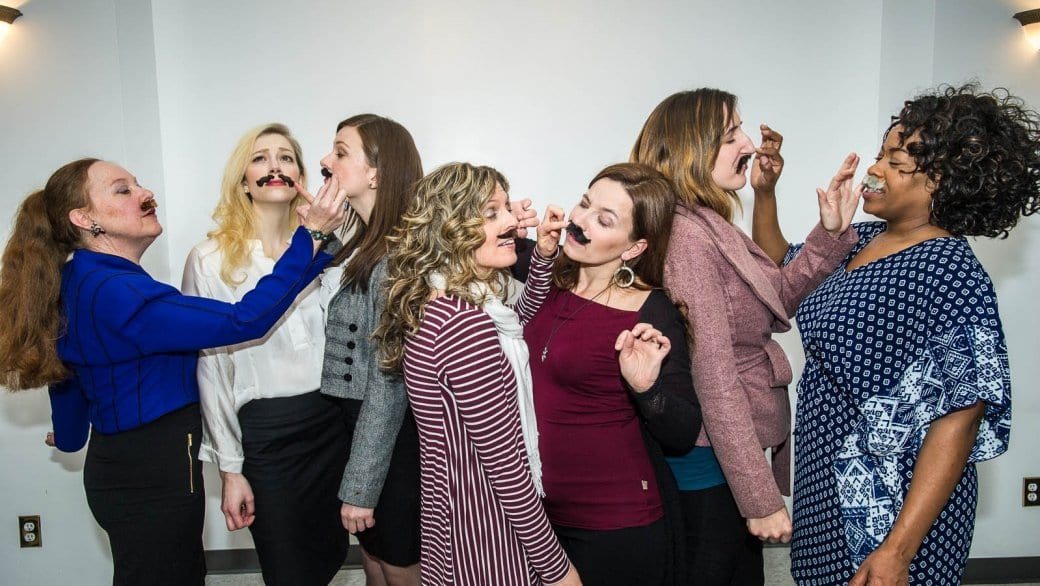The Gladstone is about to be the site of a rare event: two women locking lips on an Ottawa stage.
The Three Sisters Theatre Company is producing the play Anton in Show Business, where all 13 roles are played by women. Playwright Jane Martin does include male and female characters in her comedy — with gendered names, attire, and all the rest — but she always intended for the roles to be played by women.
The choice of play is meant to jive with the company’s mandate, which is to address gender inequality in theatre by producing only plays that pass the famous Bechdel Test. To pass the test, the play must have at least two women in it, the women must talk to each other, and they must talk about something other than men.
“It’s very common that there are very few women in a show or the women are either decorative or the girlfriend,” artistic director Robin Guy says. “It’s not fun to play characters where all they do is moon around after a boy . . . if that’s the only story we’re telling about women, there’s a problem.”
The play, which won the American Theatre Critics Association’s Harold and Mimi Steinberg/ACTA New Play Award in 2001, is a story about a theatre company preparing to do a production of Anton Chekhov’s classic The Three Sisters in modern day Antonio, Texas.
Guy says it’s a “backstage comedy” — exploring theatre archetypes and the trials and tribulations of putting on a play — but it’s also about the relationships between the three very different female actors preparing to play Chekhov’s three sisters. “It’s their differences that make it very, very funny, and give it this beautiful heart.”
With a woman-only cast, the playwright is able to make a political statement with humour. “Because the gender inequity in theatre is so strong, the point of having women play men — particularly, two of them play male directors — is to redress the gender inequity, and satirize that it’s always men,” she says.
Two of the male characters, and one of the female characters, are written as homosexual, but we get no heat from these un-partnered figures. Ironically, the real same-sex heat —the aforementioned lip-locking — comes from the play’s straight couple.
“There is a very hot love scene,” she says. “It’s between a male character and a female character, but it’s two women playing the parts, of course.” That doesn’t make it a lesbian encounter, but the apparent woman-on-woman action adds yet another interesting layer to this complex play.
Anton in Show Business
Wednesday, Feb 24–Saturday, March 5, 2016
The Gladstone, 910 Gladstone Ave, Ottawa
threesisterstheatre.ca


 Why you can trust Xtra
Why you can trust Xtra


